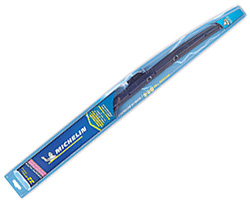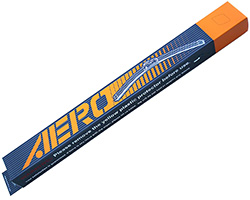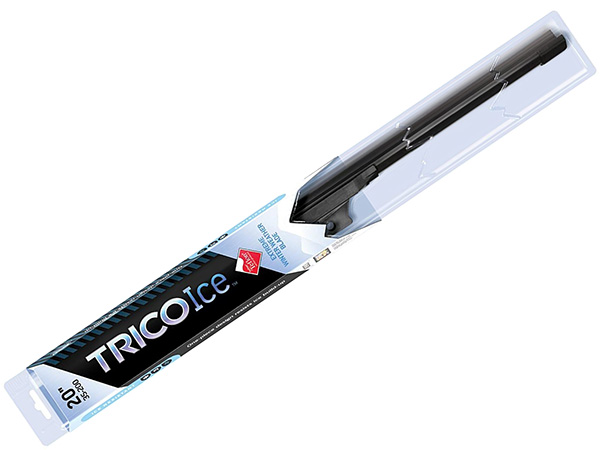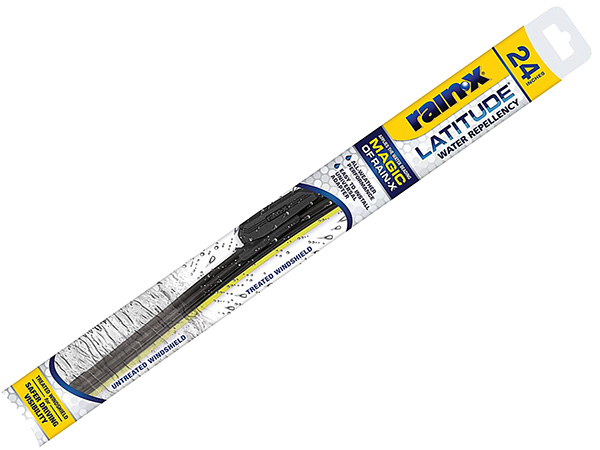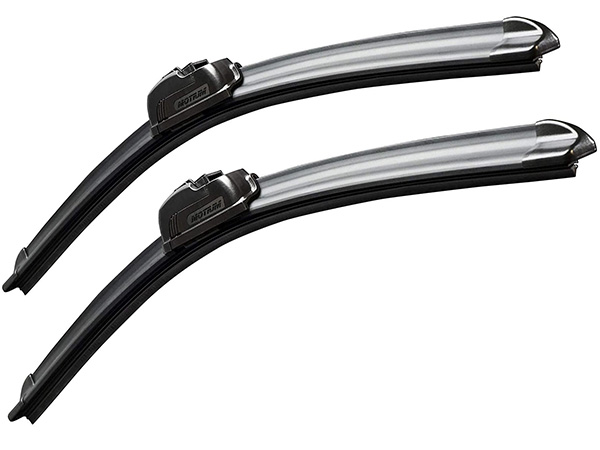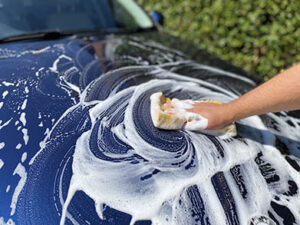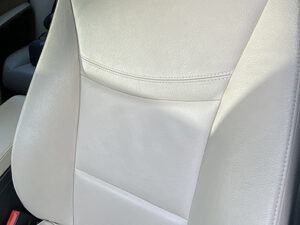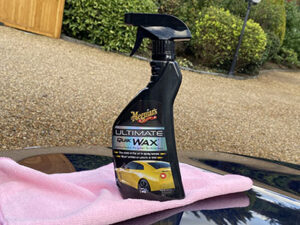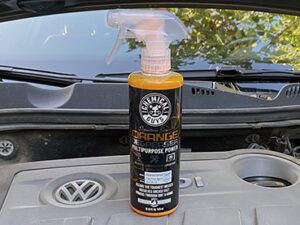Home \ Shop \ Automotive Garage \ Wiper Blades
Best Windshield Wipers and Wiper Blades Shortlisted in 2025
This article will show you which wiper blades are better, and which ones are also good and durable, nevertheless reducing your comfort during driving
It’s crucial to have windshield wipers so you can rely on them anytime, no matter what the weather is. Whether your existing blades are wearing down or simply aren’t cutting it, there’s much to consider before plunging into the market. The range and design of wiper blades are only surface-level considerations, and we need to delve a little deeper to get the full picture.
Technical Terms
You might see a few technical terms listed in this review – don’t fret. If you’re not sure about some of the terminology surrounding wiper blades, it’s a good idea to familiarize yourself to make your search that much easier.
First off, you’ll see “beam” or “bracketless” (alternatively, “frameless”) thrown around when describing wiper blades. Traditionally, wiper blades had a frame (or bracket) which held the blade itself to the wiper. These types of wipers are typically flimsier and don’t hug your windshield quite as tightly. On the other hand, bracketless blades (typically using memory foam) conform to your windshield’s curvature and minimize shifting, seeing as the blade and wiper are 1 smooth piece. Generally, it is preferred to go with beam wipers, and it’s commonplace in this review as well.
Another potentially confusing topic is the installation of the blades – commonly, you’ll find that windshield wiper slots are a “J-hook” mechanism that keep your blade in place. It’s vital that you make sure you know the type of connector your windshield takes before you buy wiper blades.
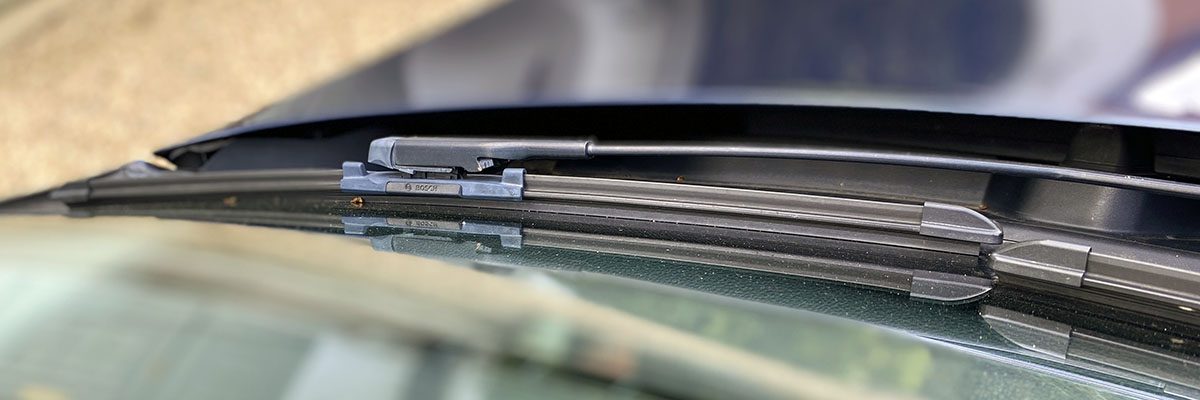
Some other phrases that are thrown around here are noise, jitter, wind shift, and streaking. These are problems that nobody ever wants with their windshield wipers. You would also find out information about some more problems with windshield wipers by following the link.
- The noise is quite straightforward – it can get on your nerves if your wipers are very loud. John Seabrook once told The New Yorker journal a 1962 story where been these: “in a mizzling rain, they screeched back and forth across the glass, mesmerizing the driver, and occasionally causing accidents“. This piece of the story is all about noise and the risks that it causes.
- Jitter is when your wipers shake while you drive, either due to wind or poor fit.
- Wind shift, then, is any displacement caused due to wind or fast speeds – this is where an aerodynamic design that combats this problem really helps.
- Finally, streaking is a term used to describe when wiper blades leave behind streaks, usually when they’re getting worn or are simply not good enough.
With that out of the way, let’s finally get into the products themselves. We’ve chosen eight of our favorite wipers on the market right now – from the most affordable to premium choices.
- 1. Review of The Best Car Wiper Blades (Shortlisted)
- 2. BOSCH ICON 22A Wiper Blade
- 3. MICHELIN Stealth Ultra Windshield Wiper Blade (8522)
- 4. AERO Voyager Windshield Wiper Blades (Set of 2)
- 5. ANCO OE Winter Wiper Blade
- 6. TRICO Ice Extreme Weather Winter Wiper Blade
- 7. RAIN-X Latitude Wiper Blades
- 8. MOTIUM Premium All-Season Wiper Blades
- 9. ABLEWIPE Windshield Wiper Blades 19F28-2 (Set of 2)
- 10. Conclusion – Buyer’s Guide
- 11. Do I need to clean my windshield if I have wipers?
- 12. Can I use my wipers to clear snow and ice from my windshield?
- 13. Is there an advantage to conventional bracketed wiper blades?
- 14. I take good care of my wipers; why do they deteriorate so fast?
Review of The Best Car Wiper Blades (Shortlisted)
PROS
- Attention to detail
- Convenient and easy to use
- Universal contour
- Quality manufacturing
CONS
- Possible streaking with long usage
Bosch is a household name across multiple industries, from home appliances to car accessories; their entry on our list comes as no surprise. The 22A blades offer a variety of features that make it a proper premium choice.
We’ve found it is Impressive Designed
This wiper blade has some seriously eye-catching details, from the patented rubber tips to the symmetrical wind spoiler. Everything about this product seems to be tailored to offer the most convenient experience in any weather. This isn’t particularly reflected in the price, either – it is well within the typical price range for high-end wiper blades. Topping off the feature list are the patented beam design which optimizes your field of vision and tension spring technology that is designed to contour any windshield. Overall, there is nothing wrong with these wipers; on the rare occasion, buyers noticed streaks forming over time, but that’s about it.
PROS
- Wide selection of sizes
- "EZ-Lok" makes it easy to use and replace
- Smart grip
- Designed for minimal noise
CONS
- Not suited to very harsh weather/winter
When it comes to names in automotive accessories, Michelin might be one of the most recognizable. The mouthful of a product name aside, these wipers are quite handy, and rival the Bosch option we looked at previously in price.
We’ve found it has a First Class Design and a Wide Selection
The great thing about this product is that it comes in a myriad of sizes – 10, to be precise. It encompasses a great range of car windshield sizes, from 16 to 28 inches. As for performance, however, it falls just short of the Bosch. Despite the fact, it is still a strong and user-friendly performer. The blades themselves are designed to independently grip the windshield for smooth operation, and the “EZ-Lok” system makes it extremely easy to replace. Finally, as the name suggests, they are manufactured with the minimization of noise in mind.
The downsides, however, are that it is a coin toss in ice and snow. Most negative experiences revolve around snow collecting under the blade and being a pain to dig out later, not to mention compromising functionality. Otherwise, it’s not too shabby; the size range Michelin offers allows you to match the exact blade sizes your windshield requires.
PROS
- Very affordable
- Easy installation
- Durable for the price
- Designed to last
- Rear wipers also sold
CONS
- Not suited to very harsh weather
As the name suggests, this product is a fantastic purchase on a budget. Not only does this package boast an OEM-Quality fit, but it also comes out to less than a typical wiper blade – despite coming as a set of two. Does the product suffer due to its affordability?
We’ve found it has Surprising Performance
It’s always nice when a product is capable of standing the test of time in spite of its price, and these blades are no different. The design is mindful and offers an overall convenient fit. The specially-blended plastic is precise and intricate, and offers high lifetime due to its resistance to heat deterioration. To add to the abovementioned, the design allows the blades a fair amount of stability, reducing drag, noise, and shifting due to wind. Installation is very easy according to most buyers, and the wipers seem to leave behind far less streaks than conventional blades. However, some of the buyers do repeat the “you get what you pay for” mantra after having used these; while most noted that they could use these year-round, some found it insufficient for harsher weather (such as heavy snow). One thing’s for certain: in milder environments, these blades will do the job for a much lower cost than the bigger brands.
PROS
- Wide selection of sizes
- Easy to install and replace
- Streak-free even in winter
- Effective design
CONS
- Awkward fit for some buyers
Offered with even more affordable rate (it would seem) than the AERO, the ANCO 30 line of wiper blades is a decent shout. It is sort of a mix between the AERO and the Michelin Stealth blades, with a bit of each product’s characteristics packaged at a budget price.
We’ve found it is Decent Across the Board in Winter
The ANCO, like the Michelin model we looked at, comes in many different blade size options. These range from 11 to 24 inches, and some models even come with an option to buy as a pack of 5. In terms of functionality, it does its job; of course, with its affordable nature, it’s not a particularly high-end performer. What it does have going for it, though, is the cold-resistant design, making it an option for those chilly winter days. In fact, its performance in snow is quite impressive, with many users noting that it keeps a streak-free wipe and doesn’t get bogged down. One thing that several buyers complained about, however, is its unexpectedly inadequate fit – if you’re looking to buy these, it might be prudent to do a bit of research to see what size might fit your windshield best.
PROS
- Wide selection of sizes
- Streak-free wipe in winter
- Effectively wipe large amounts of snow
- Perfect for harsh precipitation
CONS
- Tricky installation
- Inflexible in very cold weather (potential to break)
It’s probably very clear what these blades are designed to do just based on the name. Due to their rugged construction and flexible design, they are meant to optimize performance in harsh winter weather. How does it compare to some of the others?
We’ve found it as a “Winter Savior”
As one user aptly put it: “the only good thing about winter is these wipers”. They are specially designed to tackle the force that is ice and snow storms. While it has its problems, it is one of the best winter blades available in its price range. It is designed to tackle heavier jobs, but can still help you out in light rain or snow. Unfortunately, users often found installation to be quite tricky and oftentimes outright impossible. Wear and tear in general was more common for these wipers than its competitors, too. In addition, several buyers noted its lack of flexibility in harsher temperatures, citing low-quality materials.
If you’re looking for wiper blades to replace your existing ones for a couple winter months a year, these blades are perfect for the job. However, it seems they simply don’t hold up as well as others when used year-round.
PROS
- Wide selection of sizes
- Streak-free wipe year-round
- Water-repellent coating
- Perfect for rainy season
CONS
- Tricky installation
Rain-X is perhaps one of the most well-known wiper brands when it comes to dealing with rain. Their blades offer water-repellent properties, making them (and this model in particular) a fantastic choice for the rainy season.
We’ve found it as Convenient and Effective
The “2-in-1” aspect of this product makes it a solid choice for those looking specifically to protect their windshield from large amounts of water. A water-repellent coating is applied to the windshield by the wipers themselves, and can last for months. It also contours to the curvature of your windshield, so can be relied on to fit most vehicles. In addition to this, the synthetic rubber withstands various weather conditions, from mild to extreme. Finally, like the Bosch model, the blade offers a spoiler for reduced noise and wind lift. Overall, these blades have everything you need for a clean windshield.
One glaring downside is that users often found that their blades smudged their windshield and left behind annoying streaks. However, this might simply be a case of a defective or knock-off purchase; one buyer noted that his experience with Rain-X products was nothing but great, but buying this item online ended in disappointment. Be sure to get these from a legitimate seller if you’re concerned about having the same issues.
PROS
- Wide selection of size combinations
- Noise elimination and smooth work
- One-year warranty
- Affordable yet durable
CONS
- 18 inches as the smallest option
In terms of appearance and design, these blades are fantastic. The “OEM Quality” claim is certainly not a bluff; despite the affordable deal, these blades can compete with some of the best on the market.
We’ve found it as User-Friendly Option
The three categories that this item is most commonly praised in are Noise Level, Ease of Installation, and Presentation, concluding that these blades are both slick and effective. The selection of sizes is also quite overwhelming—you’re bound to find a combination that works for you, from 18 to 26 inches. As you can see, though, these blades are mostly designed for bigger windshields, with 18 inches being the smallest possible coverage.
Buyers found the J-hook connector to be very easy to use, and with a 1-year warranty on this product, it’s a fairly safe purchase. The shape of these blades is also tailored to get rid of any debris on or around the blade, ensuring it stays clean and operational. Motium ensures a wiping durability of up to a million wipes; to put that into perspective, it’s comparable to leaving the wipers on at a fast setting for 6 days non-stop. To cap it off, the aerodynamic design eliminates noise and wind lift, like some of the other choices listed here. Just make sure to take the blade protector off before using—many buyers were confused as to why is flew in the wind and streaked so badly.
PROS
- Wide selection of sizes
- Streak-free wipe year-round
- Water-repellent coating
- Perfect for rainy season
CONS
- Tricky installation
- Defects possible with online purchase
The Ablewipe blades wrap up our list, and it’s a strong choice to finish it all off. The bracketless design (like the Motium) ensures quiet and smooth wiping, while the price point makes it a great choice budget-wise.
We’ve found it as Great Value for Money
The Ablewipe blades got an even better reception when it came to installation difficulty and noise reduction capability. Much like several of the other products on this list, be very careful before you install the blades – they have a protective layer of plastic that should be removed for them to work properly. Otherwise, the further installation cannot be easier, according to most users, thanks to the simple J-hook connection. The bracketless design helps the blades contour to the curvature of your windshield and minimize jitter, noise, and any other unpleasantries.
There was one downside that users experienced with these products is the wipers being defective out of the box; whether they were mistakenly sent used blades or the shipment was botched, buyers could not use the wipers. However, the redeeming side of this is the fantastic customer service that many buyers cited, which helped them through any issues they had with the item. All in all, this is good value for money, and can do the job in silence.
Conclusion – Buyer’s Guide
Well, there you have it: 8 fantastic items for windshield wiper blades. The first step, as always, should be to see if your windshield size is covered by the sizes offered by each product. Next, if you have an unusual curvature, take the time to read about whether it can be covered. After that, the choice is yours.
These blades are all quite solid and modern, and mostly feature bracketless (or beam) designs. This means that, more often than not, these blades can all fit a range of curvatures due to their conformant nature. However, there were a couple dishonorable mentions in that regard: buyers of the ANCO and Rain-X often were disappointed with the awkward fit they ended up with. If you’re looking at these, be sure to compare to buyers with similar cars.
If you’re looking for a user-friendly option and don’t like any installation hassle, the Ablewipe and Motium offer just that. Their noise-reducing functionality and overall smooth operation can be the perfect choice for any “beginners” in the car parts realm.
For pure performance in harsh weather, Rain-X has you covered in the (you guessed it) rain. As for very harsh ice or snow, the Trico 35 model can provide some quality protection from clumping and debris. It’s worth noting, however, that the Trico might offer questionable durability in very cold weather.
For outright performers, you have the top 3: Bosch, AERO, and the Michelin Stealth. The Michelin model is basically a Bosch ICON-lite, in that it does exactly what the Bosch does – only just a tiny bit worse. The AERO is one of the most affordable options on this list, and offers surprising durability and longevity year-round. For solid performance across the board, though, you really can’t beat the Bosch ICON. Luckily, it comes in the widest selection of sizes we have on this list.
Do I need to clean my windshield if I have wipers?
As a rule of thumb, you shouldn’t use your wipers to do any “maintenance” cleaning of your windshield. In fact, ensuring that your windshield is scrubbed clean every so often (for example, every time you stop at a gas station) will increase your wiper blades’ lifetime, as there’s less grime and interference to bog them down.
Can I use my wipers to clear snow and ice from my windshield?
The short answer is: no. Much like debris and dirt, snow and ice can not only limit your wipers’ longevity, but also break them if the snow/ice is heavy enough (or, conversely, if your wipers are too flimsy for the job). Use a regular ice scraper to clear your windshield, or a defroster if the situation is mild.
Is there an advantage to conventional bracketed wiper blades?
If there are any benefits to having conventional wipers, they certainly don’t outnumber those of bracketless blades. Due to their construction, conventional wiper blades only have a few (usually 6-8) contact points with the windshield, while beam wipers “hug” your screen to create a complete coverage. In addition, frameless blades are more wind-resistant and generally more durable as well, so it’s clear to see why they are becoming more commonplace.
I take good care of my wipers; why do they deteriorate so fast?
There are many factors that could contribute to a faster wear of your wiper blades. Increased exposure to the sun (i.e., UV rays) and rain (acid or saltwater) can damage your wipers over time. In addition, many types of car wax and exhaust can also deteriorate rubber, which is the most commonly-used material in blades. In short, there are multiple environmental factors that could impact your wiper lifetime.
We do an efforts to find, research and recommend the best products. So, we may receive commissions from purchases that you make after following the links in our product reviews.
Related Products
-

The 7 Best Car Wash Shampoos in 2025: Complete Shopping Guide
-

8 Best Ceramic Coatings For Car in 2025 (Review and Buyer’s guide)
-

The Best Leather Conditioners For Car (TOP 8 Review)
-

The Best Car Waxes (2025 Review & Buyer’s Guide)
-

12 Best Engine Degreasers And Cleaners To Keep Engine Bay Really Clean


